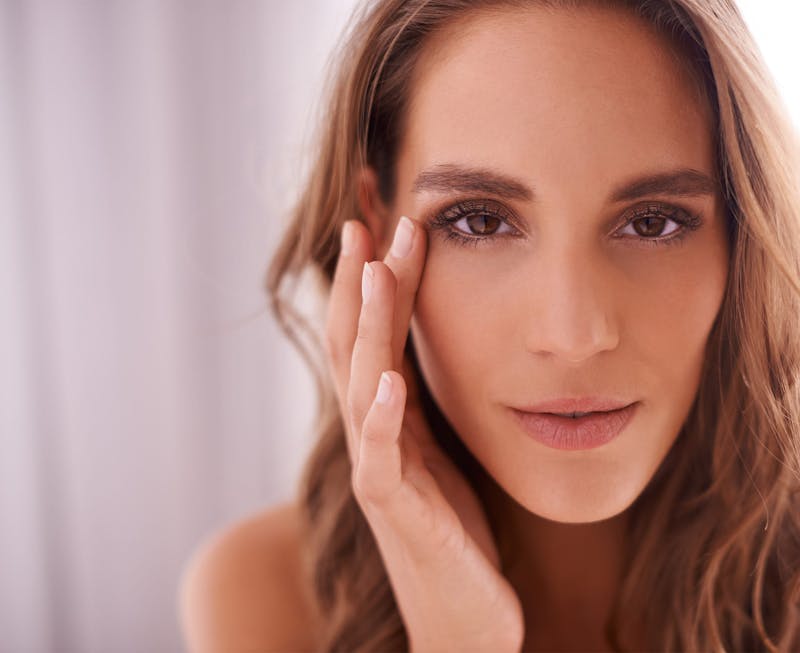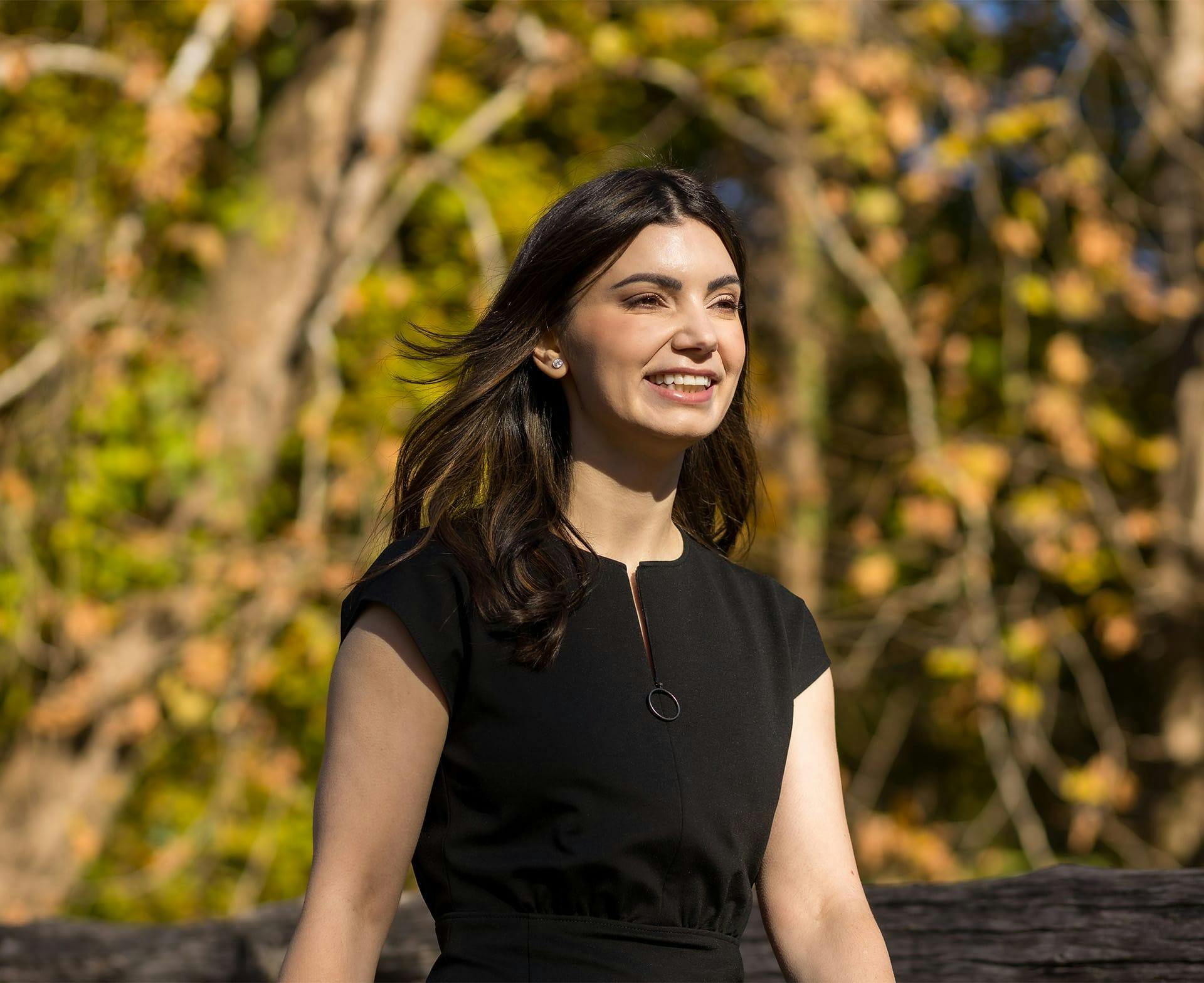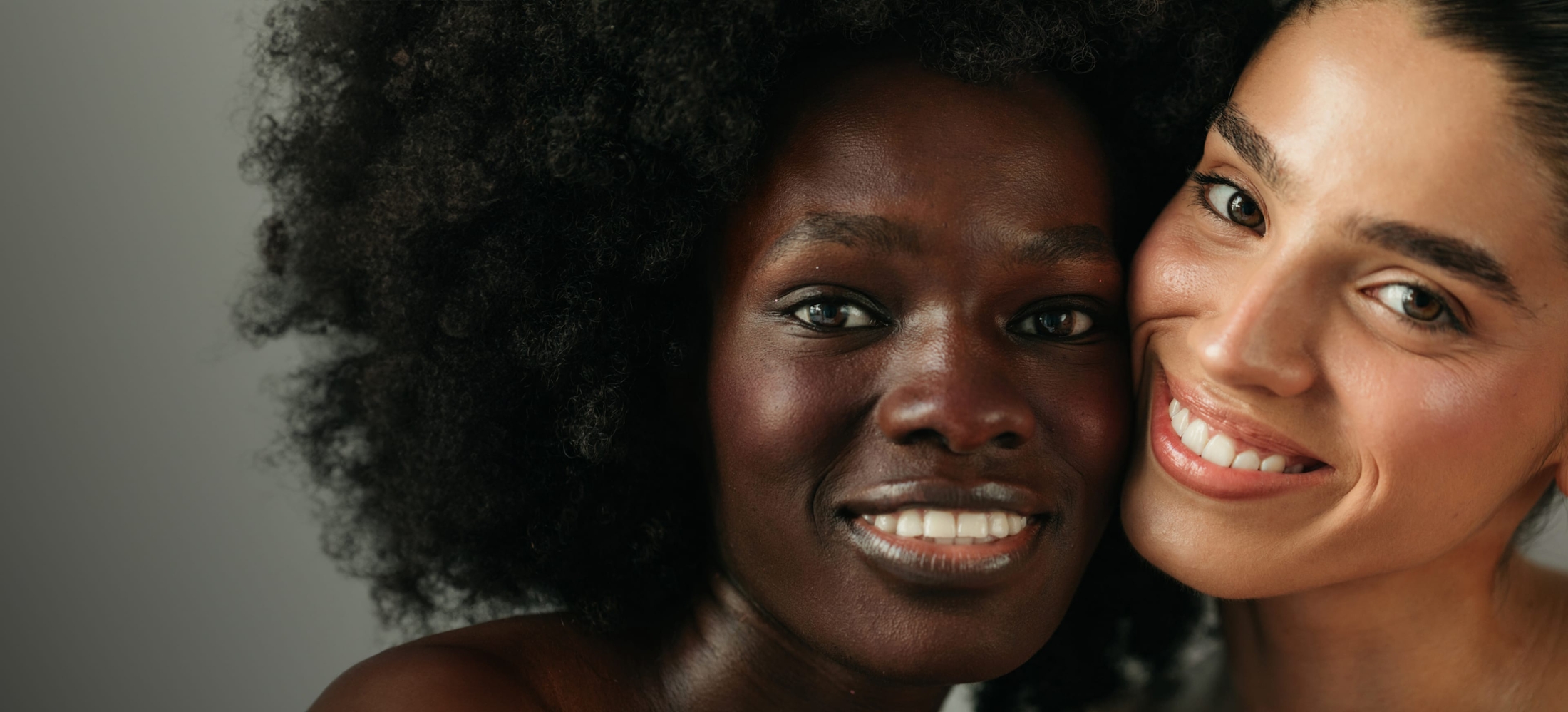
Led by Dr. Anaïs Carniciu, board-certified oculofacial plastic surgeon, ASOPRS-certified eyelid specialist, President of the Westchester County Medical Society, and educator at the New York Eye & Ear Infirmary of Mount Sinai, we focus exclusively on the delicate anatomy around the eyes. That depth of training and leadership is what we bring to today’s topic: how skin laxity contributes to eyelid drooping, what else is at play, and how specialists distinguish between cosmetic and functional concerns.
The Short Answer: Skin Gets Looser, Lids Get Heavier
- As we age, skin makes less collagen and elastin, the proteins that keep it firm and springy
- The result is thinner, more lax skin that wrinkles and drapes—especially where skin is finest, like the eyelids (National Institute on Aging, MDPI—Type I Collagen & Skin Aging)
- Around the eyes, this laxity shows up as dermatochalasis—loose, redundant eyelid skin that commonly appears in midlife and beyond (AAO EyeWiki—Dermatochalasis)
Skin Laxity vs. Ptosis vs. Brow Descent
Dermatochalasis (skin laxity)
- Loose upper-lid skin that can rest on the lashes or crowd the lateral eyelid fold, often worsening late in the day
- It’s a skin redundancy problem, not a muscle-lifting problem
Aponeurotic (involutional) ptosis
- True eyelid droop from levator aponeurosis stretching or dehiscence
- The lifting tendon thins with age, lowering the lid margin and often raising the eyelid crease (AAO EyeWiki—Aponeurotic Ptosis; Springer—Involutional Ptosis Chapter)
Brow ptosis
- The eyebrow itself descends with age, pressing skin toward the upper lids and mimicking dermatochalasis
- Treating skin alone won’t restore natural brow-to-lid harmony; brow support may be part of the plan (AAO technology assessment)
Why Skin Laxity Can Become A Functional (Not Just Cosmetic) Issue
- Redundant upper-lid skin and/or ptosis can narrow the superior visual field and make reading or driving more difficult
- Evidence syntheses report objective improvements in visual field and vision-related quality of life after appropriately selected upper-lid surgery (JPRAS—Systematic Review of Functional Outcomes; Thieme—Objective visual field change after blepharoplasty)
Treatment Principles: Matching The Plan To The Problem
When skin laxity is primary
- Upper-lid blepharoplasty removes carefully measured skin (and sometimes a small amount of muscle or fat) while preserving function and a natural contour
- For lower lids, addressing septal laxity and fat prolapse may involve transconjunctival (scar-sparing) approaches with selective fat reshaping
- Skin fine lines can be addressed with resurfacing in appropriate candidates (EyeWiki—Generalized Eyelid Edema: age-related changes; Thieme—Fat Management in Lower Lid Blepharoplasty)
When the lid margin is low (aponeurotic ptosis)
- Levator aponeurosis repair/advancement restores lid height and contour
- It is distinct from skin-only surgery and may be performed alone or with blepharoplasty (AAO EyeWiki—Blepharoptosis; OAE—Involutional Ptosis review)
When brow descent contributes
- A brow-lifting technique can re-establish brow support and reduce upper-lid crowding for a harmonious result
Why Patients Trust New York Eye & Face
The right surgeon for eyelid rejuvenation protects the delicate structures that define vision, expression, and eye health. At New York Eye & Face, that precision is the cornerstone of our care.
Our founder, Dr. Anaïs Carniciu, is among an elite group of fewer than 750 surgeons worldwide certified by the American Society of Ophthalmic Plastic and Reconstructive Surgery (ASOPRS). This rare credential reflects years of fellowship training dedicated exclusively to the eyelids, orbit, and surrounding facial anatomy—far beyond the scope of general plastic surgery.
Because each layer contributes differently, treatment must be as individualized as your anatomy. Dr. Carniciu’s dual background in ophthalmic and plastic surgery allows her to distinguish what truly needs correction and design the least invasive plan to restore both comfort and balance.
Ready To Understand What’s Causing Your Eyelid Droop?
If you’re beginning to notice the following changes, it may be time to meet with an oculofacial specialist:
- Skin resting on your lashes or blocking peripheral (temporal) vision
- Forehead strain or fatigue from constantly lifting your brows
- Persistent under-eye bags or hollows despite rest and skincare
- Makeup smudging or transferring onto the upper lids due to skin overlap
Dr. Carniciu will carefully assess every layer of the eyelid and craft a personalized plan to refresh your appearance while safeguarding comfort, vision, and natural expression. Contact us today to book your consultation and learn more.



